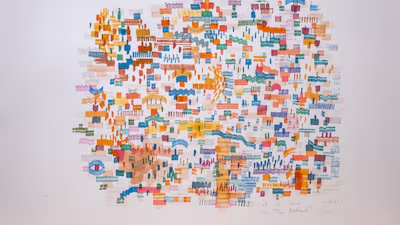
An artwork by Faris Badwan, created during a phone call with Selina Denman. Photo: Faris Badwan
An artwork by Faris Badwan, created during a phone call with Selina Denman. Photo: Faris Badwan
The art of conversation: Faris Badwan's phone call-inspired paintings
A chat with the artist turns into an exploration of the subconscious mind
